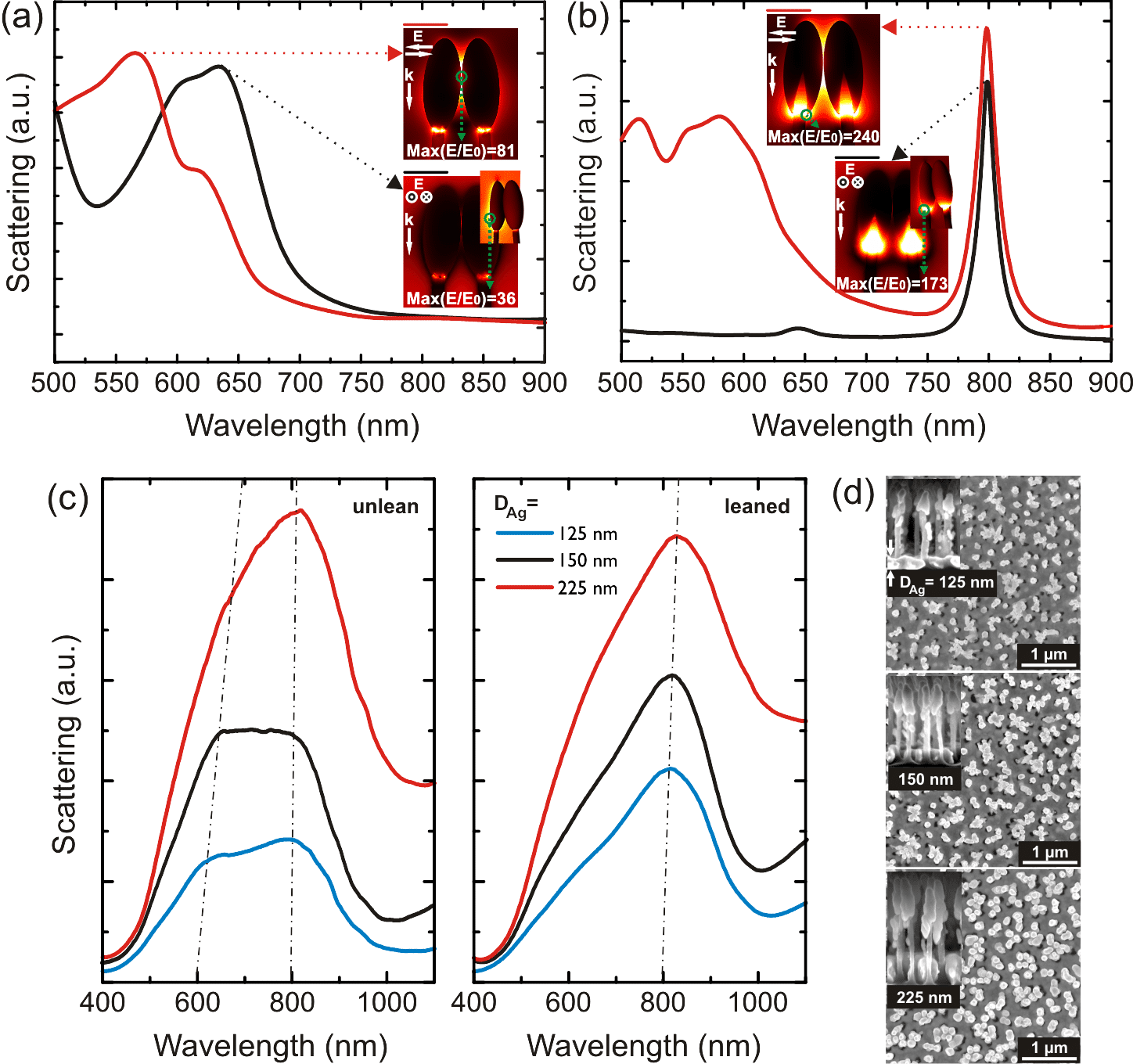
Exploring Plasmonic Resonances of Silver Capped Silicon Nanopillars
Etching without applying a lithographic step can be used as a novel way of controllably fabricating large-area plasmonicnanopillar structures (NPs) in extremely short time [1]. However, the localized surface plasmonic resonance (LSPR) modes of NPs remain unknown. Here, we present LSPR properties of the NPsacquired by 3D FEM simulations and dark-field scattering measurements. The simulation results reveal that a silver capped silicon NP exhibits a strong LSPR resonance which couples through the Si cavity. This mode is distinguished by the enhanced localized fields near the neck of the silver cap, and its wavelength is found dominatedonly by the diameter of the Si pillar. Surprisingly, it is found that the resonance energy of such a cavity mode cannot be tuned via leaning of the pillars towards their nearest neighbors. The scattering measurements are in agreement with the simulation results and support the conclusions drawn from the simulations. The measured scattering peaks are broad, due to the slight variation inthe fabricated NPs geometries.The above mentioned results open for the possibility of developing the substrate towards a multifunctional plasmonic sensing platform that fulfills all the requirements of an ideal LSPR substrate for various sensing applications.

Figure 1. (a) Calculated scattering spectra for a dimer of Ag@Si NPs without Si cavities (the Si inside the Ag caps are replaced by Ag) under different polarization directions. (b) Same as (a), but for the case that the NPs contain Si cavities inside their Ag caps. (c) Measured scattering spectra for NPs on three substrates with different Ag deposition thicknesses: 125 nm, 150 nm, and 225 nm. (d) SEM images of leaning NPs (top view), Insets: cross-sectional view of the NPs before leaning.
[1] M. S. Schmidt, J. Hübner, A. Boisen, Advanced Materials, 24 (2012) 11-18.
kaiwu@nanotech.dtu.dk
Powered by Eventact EMS